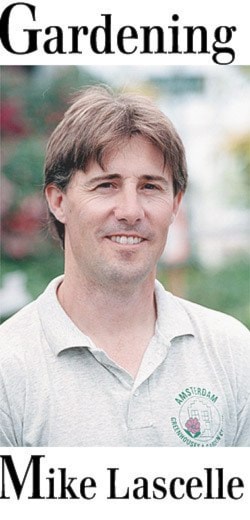If gardening helps us get in touch with nature, then feeding the birds – be it passively or with intent – is about as close as we can get to ‘being one’ with the environment.
Sometimes the birds are so grateful that they actually touch back, which is just their way of saying thanks.
I remember one remarkable example of this when I was working as an estate gardener some 30 years ago. This estate had a small stable inhabited by an old, grouchy Indian pony named Dan, whose caretaker was an even older (but much nicer) retiree who lived in a cottage with his wife at the bottom of the hill. Bill and May loved their birds and the backyard was festooned with every imaginable feeder. I would often join them for lunch, at which time they would introduce me to their feathered friends.
One day in early spring, just as the hummingbirds had migrated home, Bill pointed out a particular one he called Rusty (it was a Rufous Hummingbird), whom he insisted knew him personally. When he went outside to greet it, Rusty immediately landed on the rim of his cap, leaned over upside-down by hanging on with his claws and started licking Bill on his temple with its tiny long tongue. If I hadn’t seen it with my own eyes, I wouldn’t have believed it, but there was genuine affection there.
There are basically two approaches to bird feeding, the au natural way by means of planting trees, shrubs and perennials that provide seeds or fruit that they forage on, and the more direct method of providing seeds or suet on an ongoing basis.
I personally prefer the first method, after all, most bird species have been surviving here a lot longer than we have because they have adapted to indigenous foods. These would include many native species that gardeners often cut down in favour of less bird-friendly plants; cone-bearing trees such as red cedar (Thuja plicata), western hemlock (Tsuga heterophylla), Sitka spruce (Picea sitchensis) and Douglas fir (Pseudotsuga menziesii) are important natural seed sources.
That doesn’t mean that ordinary ornamental plants can’t provide seeds also, but you will have to leave those seed heads alone in the fall and not tidy-up or cut everything back. Just in the perennial border alone, yarrow (Achillea), Coreopsis, Salvia, Rudbeckia, Aster, Delphinium, Echinacea, Perovskia (Russian sage) and Goldenrod (Solidago) all provide an abundance of seeds, if they are left to mature. Even shrubs such as witch hazel (Hamamelis) and hardy hibiscus (Hibiscus syriacus) can be important seed sources, as well as Japanese maples (Acer palmatum) whose samaras or keys are a highly prized food.
Berries are also critical food sources, particularly at this time of the year. robins, cedar waxwings, varied thrushes and Steller’s jays can often be found picking away at rose hips, Pyracantha and Oregon grape (Mahonia aquifolium) berries. We actually have many small to mid-sized ornamental trees that provide a beautiful floral display and then set berries for the birds; the best of these include mountain ash (Sorbus), Amelanchier x grandiflora (shadbush), Cornelian cherry (Cornus mas), Korean dogwood (Cornus kousa) and ornamental crabapples (Malus) such as ‘Red Sentinel’ and ‘Red Jewel’.
Hummingbird enthusiasts have a lot to be thankful for here in coastal British Columbia, because we can grow a wide variety of nectar-bearing plants. These birds tend to be attracted to red or violet-blue flowers more than often, but I have seen them feeding on blooms of many colours. By far, their three favourite plants are the early red-flowering currant (Ribes sanguineum), red bee-balm (Monarda) cultivars like ‘Jacob Cline’ or ‘Gardenview Scarlet’ and reddish-orange honeysuckle vines (Lonicera) such as ‘Dropmore Scarlet’. The list of nectar-providing perennials is quite extensive and includes Crocosmia ‘Lucifer’, cape fuchsia (Phygelius), columbine (Aquilegia), red-hot poker (Kniphofia), Agastache, Delphinium, tall salvias, Phlox paniculata, Lobelia cardinalis and hollyhocks (Alcea). Even annuals such as snapdragons, spider flower (Cleome) and flowering maple (Abutilon) are significant contributors. When trying to attract hummingbirds with plants, it is important to avoid using pesticides in your garden as the residue on the flowers can be directly ingested with the nectar and these birds may eat the small insects you are trying to spray. Also, hummingbirds spent a great deal of their time just sitting (up to 80 per cent) on fine open branches or clotheslines, so keep an eye out for them. I once watched one take a bath in the backyard sprinkler while perched on a low Douglas fir branch.
Mike Lascelle is a local nursery manager and gardening author. Email him at hebe_acer@hotmail.com.
Mike blogs at www.soulofagardener.wordpress.com.
